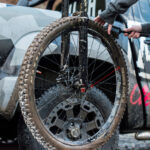A 3 Seater Bike is a bicycle specifically engineered to carry three individuals simultaneously. These bikes are designed with extended frames and robust components to ensure the safety and comfort of the rider and passengers. Commonly featuring a rider’s seat and a bench-style seat or additional saddles for passengers, 3 seater bikes cater to various needs, from family outings to commercial transportation. While not as ubiquitous as standard bicycles, they offer a unique solution for group travel and utility. Customization is often available from manufacturers to tailor these bikes to specific requirements. For businesses and families alike, understanding the different types of 3 seater bikes is crucial in selecting the right model.
Exploring Different Types of 3 Seater Bikes
The versatility of the 3 seater bike is showcased in its various types, each designed for specific purposes and user needs. From cargo solutions to recreational family fun, these bikes offer diverse functionalities.
Electric Cargo Bikes: Powering Urban Logistics and More
Electric cargo bikes represent a modern take on the 3 seater bike, integrating electric motors to enhance their capabilities. These bikes are equipped with cargo areas, such as front or rear baskets and containers, making them ideal for transporting goods and people efficiently within urban environments. Businesses find electric cargo bikes invaluable for last-mile deliveries, student transportation, and mobile service provision, such as pet grooming or mobile bike repair services. The electric assist feature significantly reduces pedaling effort, particularly when carrying heavy loads or navigating longer distances, making them a sustainable and practical choice for urban logistics and commercial applications.
Recreational Trike Bikes: Leisure and Family Adventures
Recreational trike bikes are designed for leisurely activities and offer a stable and comfortable riding experience for up to three people. While many trikes are designed for two riders, specific models are built to accommodate a rider and two passengers. These 3 seater trike bikes are perfect for family excursions, guided tours, and rental services in parks or tourist locations. Often equipped with features like adjustable seating, ample storage compartments, and weather protection options, recreational trikes enhance the overall enjoyment and convenience of outdoor activities for all passengers. Their stability and ease of use make them particularly suitable for riders of all ages and abilities.
Family Bikes: Designed for Family Transportation
Family bikes are purposefully built to cater to the needs of families with children and pets. These bikes can be configured with various combinations of bike seats, trailers, and cargo areas to safely and comfortably transport children and pets. Ideal for family commuting, recreational rides, and running errands, family bikes prioritize safety and comfort. Common safety features include reflective materials, safety harnesses, and integrated lighting systems. Comfort is enhanced through adjustable seating positions and suspension systems, ensuring a pleasant ride for both the rider and passengers. Family bikes facilitate an active lifestyle for families, providing a practical and enjoyable mode of transportation.
Custom Bikes: Tailored to Specific Needs
Custom bikes offer a personalized approach to 3 seater bike design, allowing for modifications to meet very specific seating and functional demands. Customization options range from adjusting the frame size and geometry to incorporating extra seating or cargo capacity, and integrating specialized safety features tailored to the intended occupants. These bikes can be designed for a variety of specialized purposes, including adapted commuting solutions, unique touring experiences, or even off-road riding capabilities. Custom bikes provide a solution for those with unique requirements, ensuring that the bike perfectly matches their intended use and passenger needs.
Specification & Maintenance for Longevity
Maintaining a 3 seater bike involves regular checks and care to ensure its safety, performance, and longevity. Key maintenance areas include tire upkeep, chain tension adjustment, and general cleaning and lubrication.
Regular Tire Checks: Ensuring Safety and Performance
Consistent tire maintenance is crucial for a 3 seater bike. Regularly inspecting tires for proper inflation and signs of wear is essential for rider safety and optimal bike performance. Ensure tires are inflated to the recommended pressure, as indicated on the tire sidewall. Look for any damage such as cuts, bulges, or uneven wear patterns. Timely tire replacement, even if wear is not immediately obvious, is vital. Proper tire condition directly impacts braking efficiency and reduces the risk of skidding, particularly in wet conditions, contributing significantly to overall riding safety.
Adjusting Chain Tension: Maintaining Smooth Operation
Maintaining correct chain tension is important for the smooth and efficient operation of a 3 seater bike. Regular checks should confirm the chain is correctly aligned and tensioned—neither too loose nor too tight. A properly adjusted chain ensures efficient power transfer and prolongs the lifespan of both the chain and drivetrain components. Overly loose or tight chains can lead to inefficient pedaling and premature wear. Adjust chain tension using the tensioning bolts located on the rear axle, following the manufacturer’s guidelines provided in the bike’s manual to maximize performance and prevent mechanical issues.
Keep the Bike Clean and Lubricated: Extending Bike Lifespan
Regular cleaning and lubrication are fundamental for preserving the condition and extending the life of a 3 wheeled bike. Cleaning with mild soap and water, especially focusing on the chain and gears, removes accumulated dirt, mud, and grime that can degrade bike components. Preventing debris buildup is key to minimizing wear and tear. After cleaning, applying a suitable lubricant to the chain and other moving parts reduces friction, ensuring smooth operation. This routine maintenance enhances performance, prevents premature wear, and contributes to the bike’s longevity. Consistent cleaning and lubrication are essential practices for any 3 seater bike owner.
How to Choose the Right 3 Seater Bike
Selecting the ideal 3 seater bike requires careful consideration of several factors to ensure it meets your specific needs and preferences.
Purpose of Use: Defining Your Needs
Consider the primary purpose for which the 3 seater bike will be used. Will it mainly serve for daily commuting, leisurely weekend rides, or tackling off-road trails? The intended use case significantly influences the type of 3 seater bike that will be most suitable. Different bike styles are optimized for different purposes, so aligning the bike type with its intended application is crucial for satisfaction and performance.
Terrain Considerations: Matching Bike to Environment
Evaluate the typical terrain where the bike will be ridden. For challenging terrains like rough trails and off-road environments, a mountain-style 3 seater bike, if available in custom builds, would be appropriate. For urban settings with paved roads and sidewalks, a hybrid or cruiser 3 seater bike is generally more suitable. Terrain compatibility dictates the type of frame, tires, and suspension that will provide the best riding experience and durability.
Frame Size and Fit: Ensuring Rider Comfort and Control
Proper frame size and bike fit are paramount for comfort and control. Ensure that the 3 seater bike’s frame size is appropriate for the primary rider to facilitate comfortable and efficient pedaling. Consult frame size charts and ideally test ride the bike to assess the fit. A bike that fits well enhances handling, reduces strain, and maximizes riding enjoyment for all occupants.
Comfort Features: Enhancing Ride Enjoyment
Consider comfort-enhancing features, especially if long rides are anticipated. Look for 3 seater bikes that offer comfortable saddles, adjustable handlebars, and options for suspension systems and wider tires. These features contribute to a more comfortable riding experience, reducing fatigue and enhancing overall enjoyment, particularly over longer distances or varied terrains.
Gear and Brake Systems: Performance and Reliability
Evaluate the bike’s gear system and brakes for performance and maintenance requirements. Gears should operate smoothly and ideally be low-maintenance to ensure reliable shifting. Brakes should be dependable, providing ample stopping power and also be easy to maintain. The quality of gears and brakes directly affects the bike’s safety and ease of use, particularly when carrying multiple passengers.
Style and Aesthetics: Personal Preference
Choose a bike style and color that appeals to the riders’ personal preferences. A bike that is aesthetically pleasing and enjoyable to ride is more likely to be used frequently. Personal style considerations can significantly enhance the overall ownership experience and encourage regular use of the 3 seater bike.
Budget Planning: Balancing Cost and Value
Establish a budget for the bike purchase, considering not only the initial cost but also ongoing expenses such as maintenance, accessories, and protective gear. Finding a 3 seater bike that offers a good balance of features, quality, and price within your budget is essential. Consider long-term value and durability when making your purchase decision.
DIY Maintenance and Basic Repairs for 3 Seater Bikes
Many maintenance and repair tasks for 3 seater bikes can be performed at home, keeping the bike in good working order and safe for riding.
Regular Checks and Routine Maintenance
Routine checks are crucial for identifying potential issues before they escalate into major problems. Regularly inspect your 3 seater bike, paying attention to tires, chains, seats, and the frame. Ensure tires are properly inflated and check for punctures. Chains should be lubricated and correctly tensioned; a loose chain can slip off gears and impede riding. Inspect the frame for dents or cracks, as frame damage can compromise the bike’s structural integrity. Also, verify the functionality of components like gears, brakes, and lights to ensure they are in good working condition.
Essential Maintenance Tips
For ongoing maintenance of your 3 seater bike:
- Gears: Regularly check gears and clean them to remove dirt and grime. Ensure smooth gear shifting; if shifting is rough, adjust cable tension as needed. Functional gears make pedaling easier and more efficient.
- Brakes: Inspect brakes frequently for wear on brake pads. Replace worn brake pads to maintain optimal braking performance. Ensure brake levers are responsive and functioning correctly.
- Lights: Check lights for brightness and functionality. Replace batteries or the entire light unit if lights are dim or non-operational to ensure visibility and safety, especially in low-light conditions.
Other simple maintenance tasks include tightening loose bolts and adjusting seat height for comfort. For significant repairs, it is advisable to consult a professional mechanic. Major repairs might include frame repairs, wheel truing, or complex gear system overhauls.
Q&A: Common Questions About 3 Seater Bikes
Q1: How fast can a 3-seater bike go?
A1: The speed of a 3 seater bike varies by type, but electric models typically reach average speeds up to 28 mph (45 km/h). Factors like motor power, rider input, and terrain influence speed.
Q2: How should I maintain a 3-seater bike?
A2: Regular professional maintenance and tune-ups are recommended. Follow the manufacturer’s maintenance schedule. Perform routine tasks like chain cleaning and lubrication, tire inflation checks, and prompt replacement of worn parts to keep your 3 seater bike in optimal condition.
Q3: Is special training needed to ride a 3-seater bike?
A3: Basic cycling skills and balance are generally sufficient to ride a 3 seater bike. No specialized training is typically required, though some manufacturers offer familiarization sessions to help new users adapt to riding a larger bike.
Conclusion:
3 seater bikes offer a practical and enjoyable solution for group transportation, whether for families, recreational activities, or business purposes. Understanding the different types, maintenance needs, and key selection criteria is essential for choosing the right bike. By considering factors like intended use, terrain, and comfort, and by committing to regular maintenance, owners can ensure their 3 seater bike provides reliable service and enjoyable rides for years to come.


